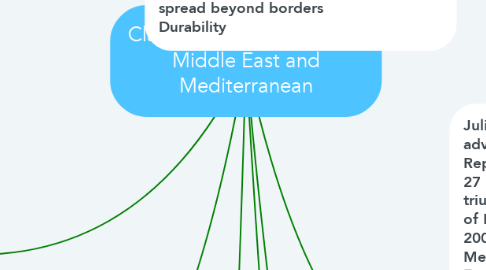Classical Civilization in the Middle East and Mediterranean
by Alex Gouin

1. Zoroasterianism Zoroaster (630—550 B.C.E. Revised Sumerian polytheism Introduced monotheism Banned intoxicants and animal sacrifice Doctrines Life a battle between two divine forces: good and evil Individual salvation a free choice of God over evil Last judgment The righteous gain heaven, “House of Song” The evil gain eternal pain Spread widely among emperors and population alike Enormous effect on Judaism, Christianity, Islam Small groups of Zoroastrians survive today Distinctive painting and architecture, spread beyond borders Durability
2. Legend of Pheidippides. Persian defeat at Marathon 490 B.C.E. Ran 26 miles to bring news to Athens, dropped dead Modern Olympic Games race named for feat Commemorates military victory and civic love
3. Persian king Xerxes amassed army 2-1 did great thing like a boss.beat the Athenians they watched their city burn Themistocles, then Athenian leader, tricks Persians to sea battle Battle at Thermopylae in narrow channel connerened the Persians defeated
4. Cyrus the Great in The Persian Empire: northern Middle East into northwest India Conquered the peoples retained the culture such as cuneiform and Advanced iron technology Enormous impact
5. Political Styles and Innovations Emphases Toleration of diversity Authoritarianism Little power sharing Darius (successor to Cyrus) Centralization of laws, tax collection Unified infrastructure Paved roads Connecting Indian border with Mediterranean and Egypt Movement for commerce and troops Regularly spaced inns, rest and change of horses Postal service Growth of new trans-regional trade Centralized bureaucracy Control of officials in distant regions of empire Oversight of tax collection
6. Rome known for empire ..... Rome Represents final stage of classical Mediterranean civilization 1st century C.E., Rome subjugated Greece and Hellenistic kingdoms Origin of Roman state Local monarchy in central Italy around 800 B.C.E. 509 B.C.E., aristocrats drove out monarchy Established Roman Republic is Republic is Regional conquests did Expansion Punic Wars 264 to 146 B.C.E. had Carthage had some Hannibal Rome seized western and Mediterranean, including Greece and Egypt was Political instable hadAmbitious generals ended in Rebellion of the poor
7. Julius Caesar ... he defeated adversaries in civil war, ends Republic 27 B.C.E. Augustus Caesar triumphed, instituted structure of Roman Empire 200 years of peace, prosperity to Mediterranean world and up into Europe 180 C.E. marks beginning of slow fall for next 250 years Invaders overturned the government in Rome in 476 C.E. Manifestation of decline Trade levels fell Birth rate fell Government less effective Two strong emperors: Diocletian and Constantine 313 C.E. Constantine tried to unite empire under Christianity In west government local Empire unable to supply order or justice Armies filled with non-Romans Inability to defend against influx of invaders Similar timing, experience as Gupta India and Han China
8. Socratic method


